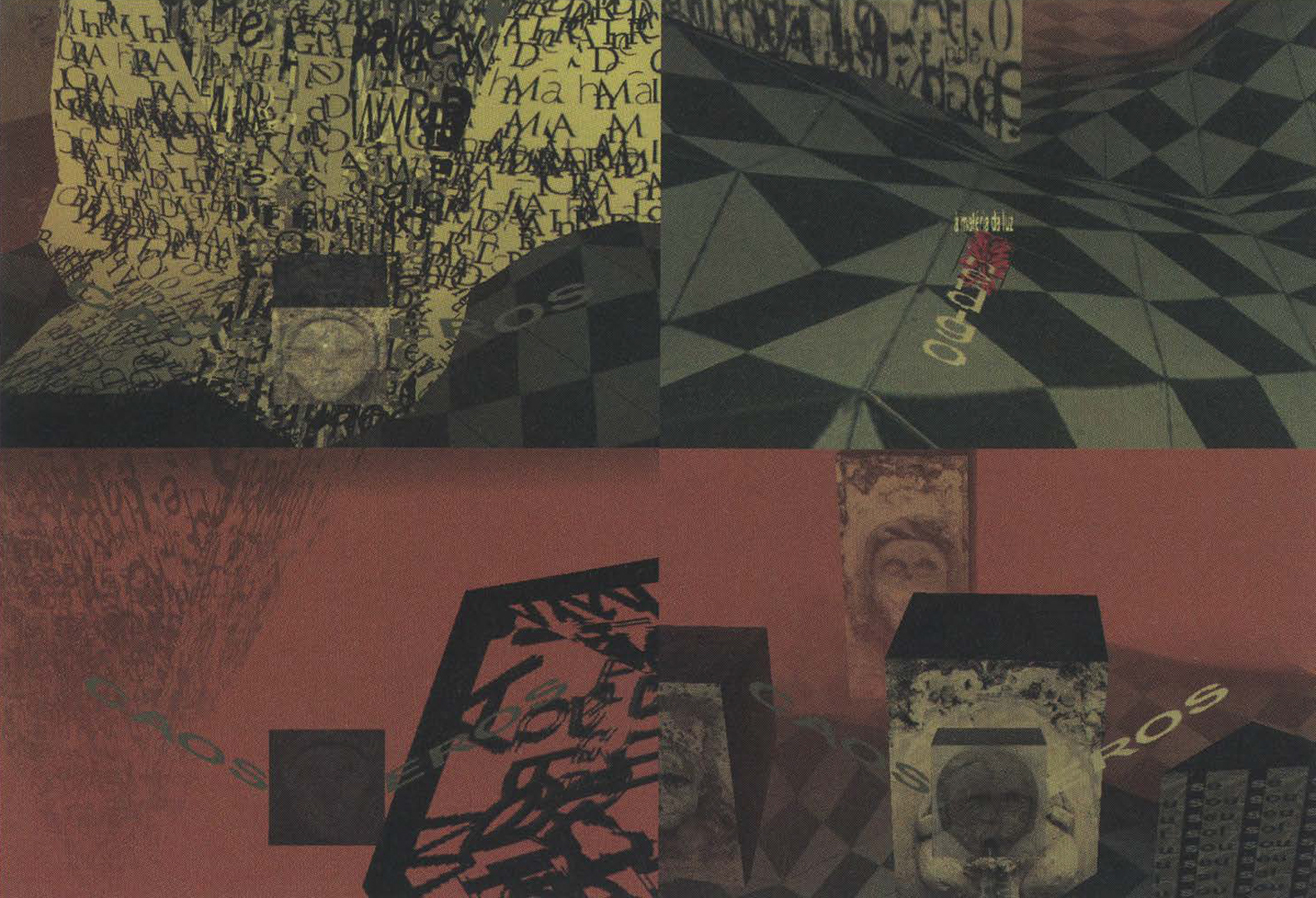Francisco Marinho: Palavrador
Artist(s):
Collaborators:
- Alckmar Luiz dos Santos
-
- Universidade Federal de Santa Catarina
- Alvaro Andrade Garcia
- Carla Viana Coscarelli
- Carlos Augusto Pinheiro de Sousa
- Cristiano Bickel
- Daniel Poeira
- Delaine Cafiero
- Fernando Aguiar
- Gustavo Morais
- Jalver Bethonico
- Leonardo Souza
- Lucas Junqueira
- Marcelo Kraiser
- Marilia Bergamo
- Rafael Cacique Rodrigues
- Ricardo Takahashi
- Tania Fraga
- Walisson Costa
Title:
- Palavrador
Exhibition:
Creation Year:
- 2007
Medium:
- Interactive book with multisensorial pages
Size:
- 32 inches x 40 inches x 72 inches
Category:
Artist Statement:
Palavrador is a poetic cyberworld built in 3D. It was conceived and implemented from a synergetic collective assemblage of ideas and activities contributed by a group of researchers. Authors with backgrounds in the arts, literature, and computer science worked together to conceive and produce a cyberworld interface that is as interactive as a game interface, as dynamic as motion pictures, and as deep as poetic discourse. Free from the constraints imposed by written texts, the poetry in Palavrador flies, using computer graphics and artificial intelligence to achieve new articulations in its aesthetic structure and unveil new conceptual possibilities. Poetic verses constructed as graphic images achieve a scenographic dimension, surpassing ornamental features and acquiring strength as interactive actors. Six flocks of meandering poems wander autonomously through the three-dimensional space. The movement logic was implemented with artificial-intelligence procedures based on swarm behavior and the steering behaviors of autonomous locomotion agents. A labyrinth architecture is generated by mathematical procedures. The models in the labyrinth receive texture maps organized through a procedural poetic logic engineered for computational systems. The logic allows real-time actualization of the words and makes the poems, mapped over the faces of the models, change from time to time according to the positions occupied by the avatars. The interface between users and Palavrador is a physical multi sensorial that “displays” a variety of poems, such as drawing poems (functional electrical tracks as in printed circuits) and electromechanical sound poems. Each page has sensors that capture user actions and react by generating responses in Palavrador. It is an environment of multisensorial poems.
Technical Information:
Palavrador is programmed in Lingo, which uses AI resources as swarm behavior to create autonomous poems. It also uses systems based in rules as structure to procedural poems that compose a 3D labyrinth. Data communication between Palavrador and the book pages is fostered by a serial port controlled
by an Arduino microcontroller, which deals with control programs developed in C. Pages react in different ways to user interactions by producing real sounds and movements. The book has two folds, so it is a book with three leaves: two regular pages and one throw-out, where the LCD monitor is
located.





